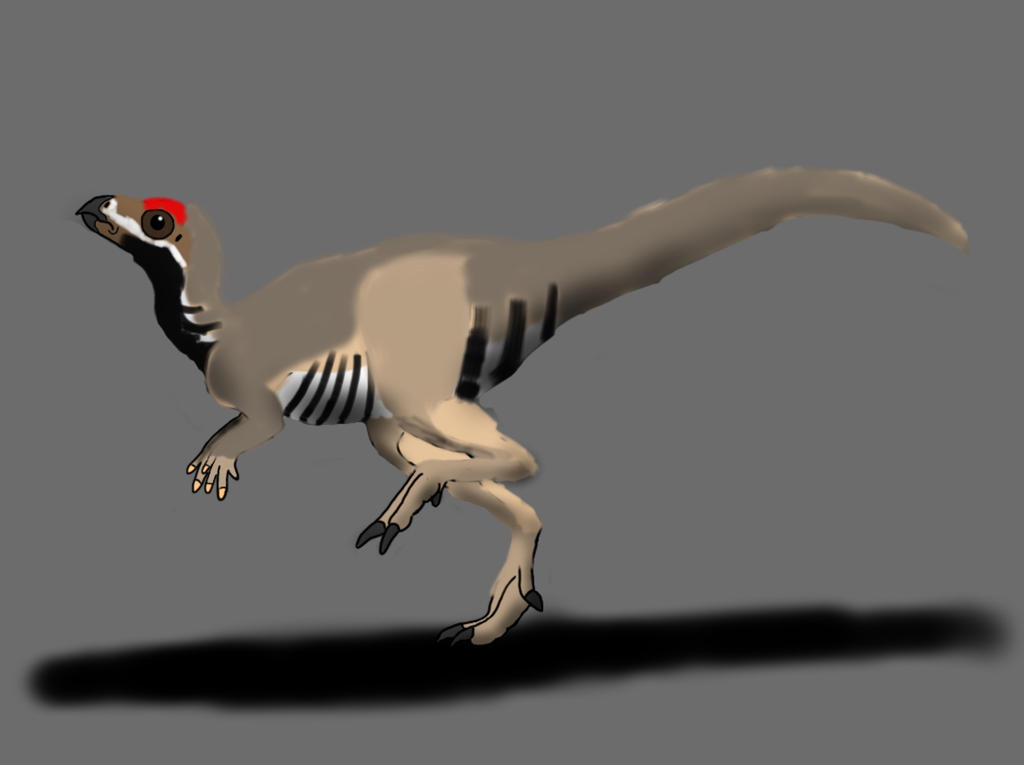ShopDreamUp AI ArtDreamUp
Deviation Actions
Suggested Deviants
Suggested Collections
You Might Like…
Featured in Groups
Description
Named by Rudolfo Coria, 2013
Diet: Herbivore
Length: 4 feet (1.5 meters)
Weight: 30-40 lb
Region: James Ross Island, Antarctica (Snow Hill Island Formation)
Age: 74-72.1 million BC (Late Campanian stage of the Late Cretaceous)
Enemies: Interdeterminate dromaeosaur thats known from fragmentary remains.
Note: The only specimen of this dinosaur, was a subadult, so the adult size is unknown.
Discovered in 2008 in James Ross Island, western Antarctica and named in 2013 by Argentinean paleontologist, Rudolfo Coria, Trinisaura santamartaensis was one of the few ornithischian dinosaurs (other than the ankylosaur, Antarctopelta, also found in James Ross Island) to be found from Antarctica.
It's generic names honours geologist Trinidad Diaz, while the specific name refers to the Santa Marta Cove site where it was found.
An ornithopod, Trinisaura was a bipedal plant-eater that roamed around on its hind legs browsing on the vegetation, while it relies on speed and agility to escape from predators. It probably lived in groups.
Sadly, the only specimen of this dinosaur was not yet fully-grown and known only from the hips, armbone, shoulder, thighbone, shinbone, knee bone, a few tail vertebrae, and a back vertebrae.
During the time of Trinisaura, Antarctica was at the southern polar regions after fragmenting from the breaking up of ancient Gondwana. The climate was much warmer than it is today and there were no polar ice caps. Instead, it was a lush dense forest of conifers and deciduous trees. However, during winter, darkness would still have descended, just as it is today in high latitudes. The Antarctic Peninsula, including James Ross Island, was connected to South America throughout this time period, allowing interchange of fauna between the two landmasses.
It sports a combination of features also found in Late Cretaceous Patagonian Gasparinisaura, Anabisetia and Talenkauen, suggesting that it was a basal ornithopod.
Note: Coloration based on Spruce grouse
Diet: Herbivore
Length: 4 feet (1.5 meters)
Weight: 30-40 lb
Region: James Ross Island, Antarctica (Snow Hill Island Formation)
Age: 74-72.1 million BC (Late Campanian stage of the Late Cretaceous)
Enemies: Interdeterminate dromaeosaur thats known from fragmentary remains.
Note: The only specimen of this dinosaur, was a subadult, so the adult size is unknown.
Discovered in 2008 in James Ross Island, western Antarctica and named in 2013 by Argentinean paleontologist, Rudolfo Coria, Trinisaura santamartaensis was one of the few ornithischian dinosaurs (other than the ankylosaur, Antarctopelta, also found in James Ross Island) to be found from Antarctica.
It's generic names honours geologist Trinidad Diaz, while the specific name refers to the Santa Marta Cove site where it was found.
An ornithopod, Trinisaura was a bipedal plant-eater that roamed around on its hind legs browsing on the vegetation, while it relies on speed and agility to escape from predators. It probably lived in groups.
Sadly, the only specimen of this dinosaur was not yet fully-grown and known only from the hips, armbone, shoulder, thighbone, shinbone, knee bone, a few tail vertebrae, and a back vertebrae.
During the time of Trinisaura, Antarctica was at the southern polar regions after fragmenting from the breaking up of ancient Gondwana. The climate was much warmer than it is today and there were no polar ice caps. Instead, it was a lush dense forest of conifers and deciduous trees. However, during winter, darkness would still have descended, just as it is today in high latitudes. The Antarctic Peninsula, including James Ross Island, was connected to South America throughout this time period, allowing interchange of fauna between the two landmasses.
It sports a combination of features also found in Late Cretaceous Patagonian Gasparinisaura, Anabisetia and Talenkauen, suggesting that it was a basal ornithopod.
Note: Coloration based on Spruce grouse
Image size
1992x1488px 112.21 KB
© 2014 - 2024 TrefRex
Comments3
Join the community to add your comment. Already a deviant? Log In
I'm glad to see there are some who believe that ornithopod had full coats of feathers.




































